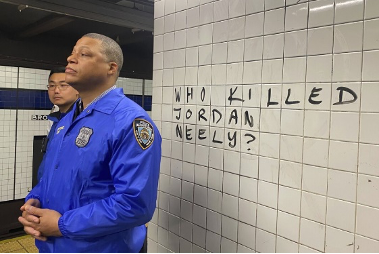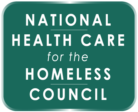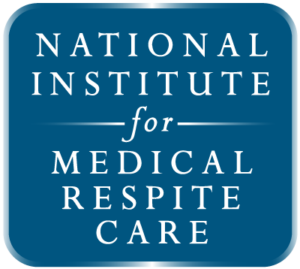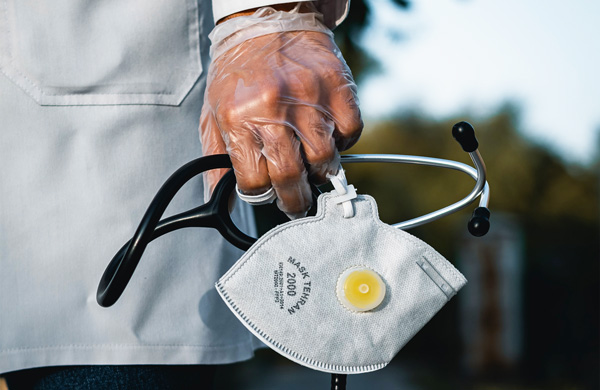By Barbara DiPietro, PhD, Senior Director of Policy


I can’t stop thinking about Jordan Neely—who was killed by another rider on a New York City subway car in the middle of the day on May 1 in full view of others. One witness joined in the killing, while others stood by and filmed it. No one stopped it; many simply fled.
Jordan’s crime? He raised his voice, said he was hungry and thirsty, and threw his coat on the floor of the subway car. He was also Black, homeless, and struggled with mental health issues. Apparently he was also “acting erratically.” None of these are crimes, of course, but his killer not only felt justified in killing him, but he was then lauded as a hero. It required days of public pressure before charges were brought against him. Jordan’s murder happened after local elected officials spent months criminalizing the presence of homeless people in the subway system. Jordan’s death was yet another example of how poor people—often Black, Brown, and Indigenous people—are murdered every day through various forms of violence.
But let’s take a closer look at the concept of murder. Seems to me there are three kinds of murders that happen to poor and/or BIPOC folks in this country:
- Deaths from direct physical violence
- Deaths from indirect policy violence
- Deaths from silent assent violence
Murder #1: Direct physical violence
This is most clear-cut type of murder. These murders are committed through police violence (e.g., Tamir Rice, Eric Garner, Breonna Taylor, George Floyd, Tyre Nichols, James Boyd—just to name a few.). They happen through vigilante executions (e.g., Jordan Neely, Trayvon Martin—just to name a few). Or they happen simply through the pervasive community violence that increasingly targets BIPOC and/or homeless people (e.g., Ahmaud Arbery, Patrick N. Shenaurlt, Morgan Holmes—just to name a few). This is why violent death among people experiencing homelessness is much higher than the general public (e.g., death reports from Los Angeles County, Minnesota, and Seattle-King County—just to name a few).
I asked our consumer and clinical leadership for their thoughts on this, and here’s what they said:
“People fear what they don’t understand and it seems so much easier for them to kill than to learn. I have dealt with mental wellness issues my whole life and I truly understand the feeling of discrimination because of it—on top of being homeless. Those that suffer from mental wellness issues are the most misunderstood individuals and for some reason people hate us, fear us, run from us, and kill us. Maybe it’s like looking in a mirror and it’s too hard for them to see so they would rather kill the reflection.” ~ Deidre Young, Chair, NHCHC National Consumer Advisory Board (NCAB)
“There is a constant threat of physical violence—as well as actual violence—perpetrated against people experiencing homelessness. The vigilance required to stay alert to protect oneself takes a toll on the body, not to mention the enduring trauma after someone has been assaulted. Unhoused people are much more likely to be the victim of a violent crime than to be the perpetrator—so much so that in DC, an act of violence against someone experiencing homelessness is a designated hate crime.” ~ Catherine Crosland, M.D., Chair, NHCHC Clinicians Network Steering Committee
Murder #2: Indirect policy violence
These murders are committed by public officials who advance harmful policies that are known to cause death. People die when states don’t expand Medicaid, when they sweep encampments, and when they deny housing assistance. People die when they are denied mental health treatment, drug treatment, syringe services, or access to overdose prevention sites. Mass incarceration, lack of support for returning veterans, pervasive access to guns, and state-sanctioned discrimination against LGBTQ youth also increase deaths. All these are conscious public policy choices championed by public officials in spite of these known consequences.
This type of murder is also committed by members of the general public who financially support and vote for these elected officials. Votes are conscious choices that can either cause death—or enhance life.
Murder #3: Silent assent violence
These murders are committed by those who say and do nothing in the face of direct and indirect violence. Those who choose not to vote, those who ignore the problem, those who turn away from the conversation because it’s “uncomfortable” also cause deaths. Silence from White people (especially White liberals) is a driver of this type of murder—and possibly one that needs the greatest attention. Racism is violence. Transphobia is violence. Misogyny, ableism, and xenophobia (just to name a few) are violence. Remaining silent is the biggest enabler of the violence that is happening every day. As the (adapted) saying from Edmund Burke goes: “The only thing necessary for evil to triumph in the world is that good people do nothing.”
How often have you remained silent when you should have spoken up? How often have you turned away when you should have engaged? For those who identify as White, how often have you believed this had nothing to do with you? Standing up, ending the silence, educating ourselves, supporting constructive public policies (and policymakers), and being active in the struggle for Justice is the only way all of us will end these murders.
“Everyone in society bears responsibility because we have allowed these conditions to exist and persist for a long time.” ~ Bobby Watts, CEO, NHCHC
Finally, I haven’t mentioned a fourth kind of violence: traumatic injury to the spirit and soul of all types of people. From the millions of interpersonal microaggressions, to the constant threats of violence, to the lack of even basic respect and dignity shown to fellow neighbors— our society attempts to kill the spirit and demoralize the soul of poor, homeless, BIPOC, and other people in an attempt to keep them oppressed. And that ain’t right.
It’s time for the murder to end. What will YOU do to help end it?
Statements and calls to action regarding Jordan Neely from our partners: National Homelessness Law Center, National Alliance to End Homelessness, National Coalition for the Homeless, National Low Income Housing Coalition, Vocal-New York, African American Policy Forum, and Funders Together to End Homelessness.
“A Closer Look” is featured in the National HCH Council’s monthly policy action alert newsletter, Mobilizer. You can get Mobilizer sent to your email each month! Want to get a feel for it before subscribing? Check out the archives here.




Related factors in Jordan Nelly’s tragic death https://www.gothamgazette.com/130-opinion/12020-jordan-neely-social-safety-net-blaming-victim